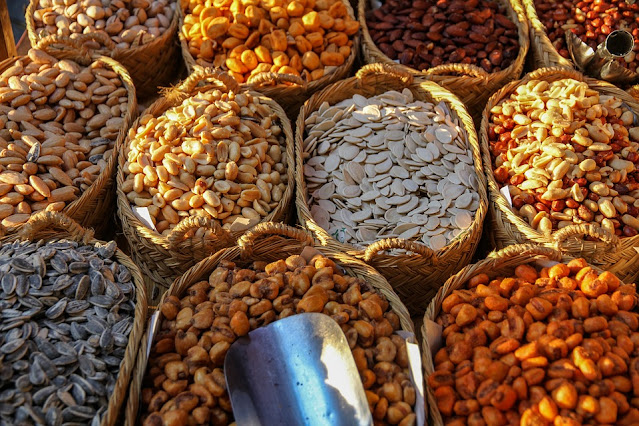In 2011, Japan overtook France in terms of maximum number of Michelin starred restaurants & has maintained its World Gourmet Crown ever since. A trip to Japan is incomplete without trying regional specialties that are prepared with careful precision & served with superlative presentation. Wicked Spoon Confessions teams up with Chef Samarth Saxena, Jr. Sous Chef at DoubleTree by Hilton, Pune to present a brief introduction to the wonderful Japanese cuisine.

The traditional cuisine of Japan is based on consumption of simple staple food such as steamed white rice or gohan (which also means meal) along with a few main or side dishes. Additionally this may be accompanied by a clear or miso soup. Seasonal changes bring more delicious offerings to the cuisine which are adapted to the menu. Extensive use of fresh seasonal produce such as bamboo shoots in spring, chestnuts in the fall & more add to the freshness & nutritional value of the meals. Side dishes often consist of pickled vegetables, broth cooked vegetables & fish. Seafood is very common & it’s often served grilled or raw as sashimi or in sushi. In fact, Japanese east almost 8 % all the fish caught in the world!
 |
| Miso Soup |
A few staple ingredients for Japanese cuisine are combination of dashi, soya sauce, sake and mirin, vinegar, sugar, and salt. Staple dishes are Gohan (steamed rice), Sashimi,
Sushi, soba (made from buckwheat flour)
 |
| Soba Noodles |
and udon (thick wheat noodles), Donburi bowl, Miso soups, Ramen noodles, Seaweeds with either soup or with salad, Natto beans with rice & of course green tea-the national beverage.
 |
| Udon Noodles |
Japanese cuisine is considered healthy due to the fact that there is a tradition of consuming simmered/stewed dishes. Nimono- a dish made by boiling or simmering vegetables in seasoned broth is a must try! There are many varieties of simmered dishes that basically contain vegetables, meat or seafood simmered with sake (rice wine), soy sauce, mirin (cooking sake) & dashi (fish seasoning).
Traditionally, Japanese cuisine uses red meat, oils/ fats & dairy products sparingly. Sometimes, use of ingredients such as soy sauce& miso tends to result in dishes high on salt content but nowadays, low-sodium versions of these are easily available.
Other than geographical conditions & seasonal changes, Japanese cuisine has been influenced by other countries- cultivation of rice, use of soy sauce & tofu from China, western influences like use of potatoes & corn & batter frying technique (tempura) from Portuguese to name a few.
 |
| Tempura |
Rise of Buddhism in in early years led to ban of meat & this is how the popular dish -
Sushi was discovered!
In turn, Japanese cuisine has influenced western cuisine from as early as the 70’s. Many European chefs traveled to Japan to learn the intricacies of Japanese cooking & starting using soy sauce as a condiment & raw fish in various preparations. Kaiseki Ryori a form of Japanese haute cuisine & a beautiful artistic & multi sensory dining experience has influenced the art of fine dining over the world. The art of Kaiseki Ryori that lays emphasis on using seasonal produce to produce well balanced dishes has slowly developed into exquisite tasting menus all over the world. Many international restaurants now use kuzu ( a starch made from the root of a Japanese vine) in place of butter to add richness to soups & sauces.
If we have now tempted you enough to try Japanese cuisine, here are few must try dishes-Chicken Teriyaki, Okonomiyaki (Japanese pancake), Ramen noodles, Tempuras, Yakitori’s, Miso soups, California rolls, Dragon rolls & Sashimi platter.
 |
| Ramen Bowl - Image Credit - Al Case |
 |
| Teriyaki Preparation |
Desserts include Yokan -a type of thick Japanese jelly, Mochi-chewy Japanese rice cakes, pancakes & a variety of crepes.
Want to pair some Japanese favorites with spirits? Here is a quick guide:
- Beer goes well with yakitori’s, tempura’s and with any other fried item or grilled items.
- Whisky goes well with fried rice or teppan noodles, stewed meats, grilled meats on tepanyaki.
- Red wines with sushi and even with the grilled dishes.
- White wines goes well with sashimi or with desserts.
















Breath taking pictures :)
ReplyDelete